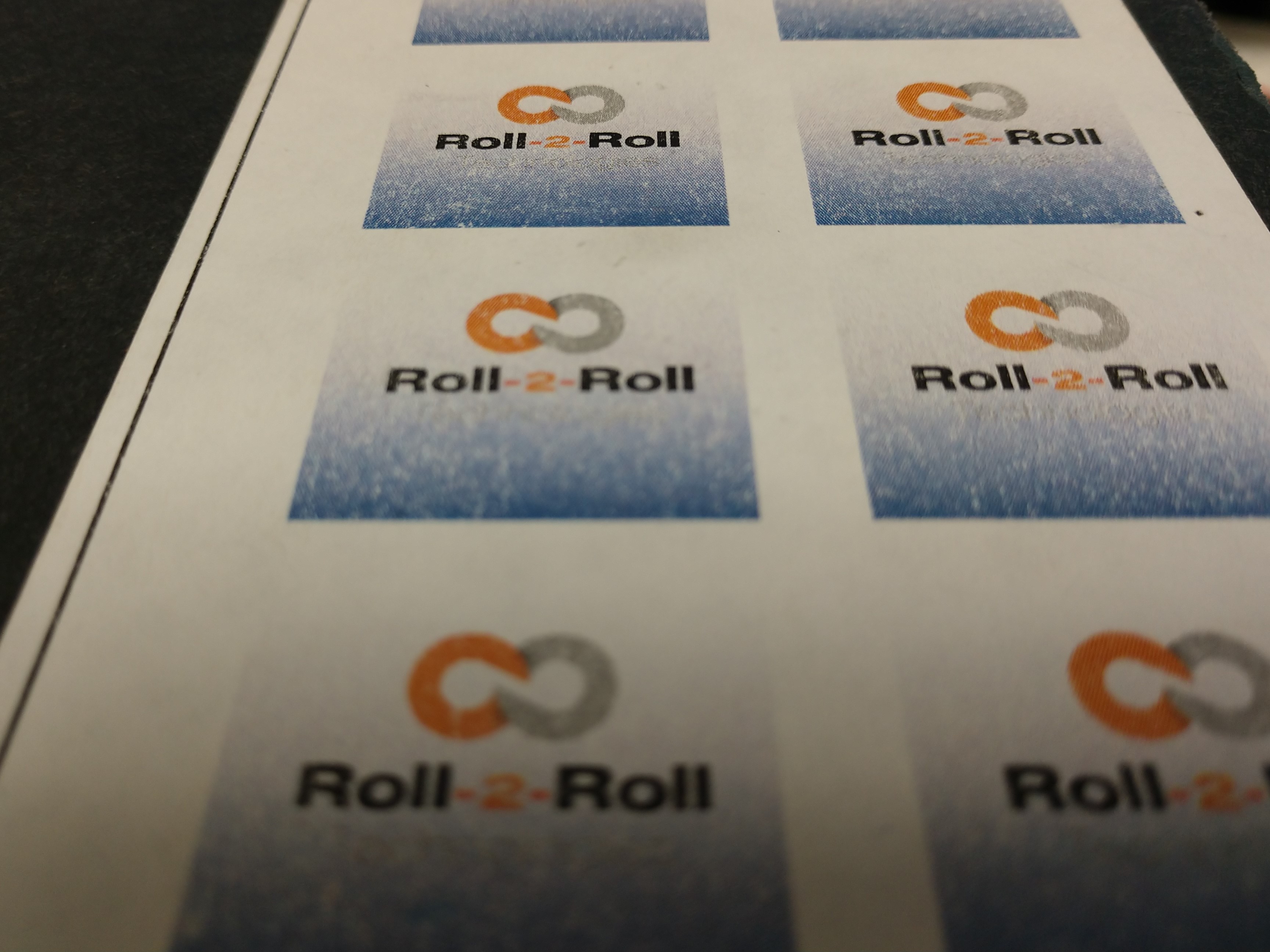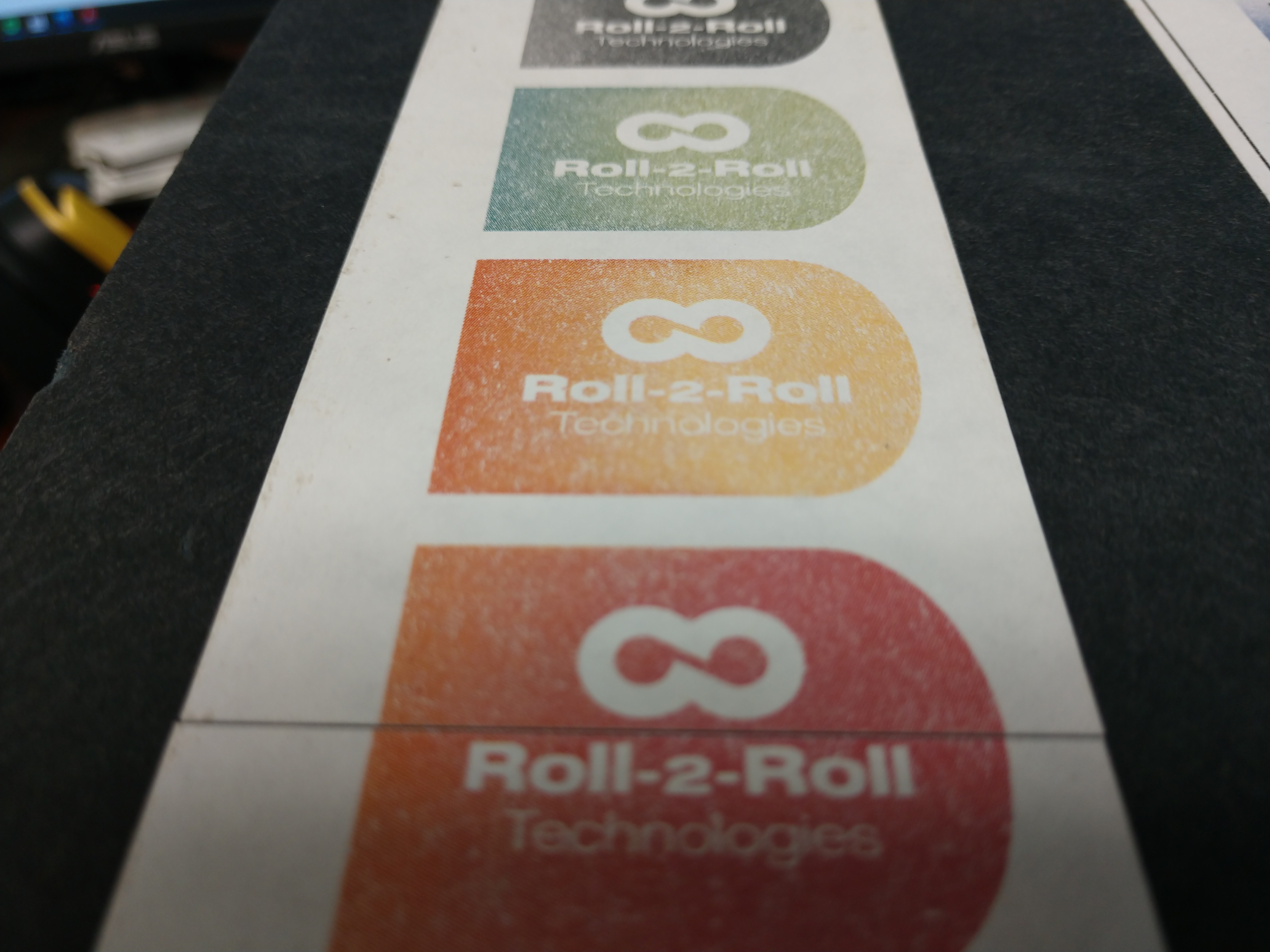Slitting a roll of printed labels or even monitoring the label printing process, you just might need a line or contrast sensing application for guiding.
One of the great features of the Roll-2-Roll® Sensor for contrast sensing is the wide variety of applications it offers. The sensor coupled with the SCU5 Roll-2-Roll® Controller allows the operator to determine the application required for web guiding, width measurement or monitoring.
Line guiding
Based on the light source in the sensor, you can detect a simple printed line of any width that is within the sensing range of the sensor and no less than 1 mm. If the contrast is very high, both infrared and white light sensors can detect the line. For more challenging contrasts, it is recommended to use the white light sensor. If the line is printed with UV ink, then the sensor with UV light source is recommended.
One of the benefits of the WPS sensors for line guiding applications is the ease given to operators to set up the control for this application. Through the operator interface the operator can go to the control operator screen and select the sensor mode between edge and contrast by pressing one button. In this same screen, the operator can select the feature on the web that is to be tracked. The operator can select to track:
- A feature that resembles a continuous line
- The threshold between two contrasting features
- The threshold of an individual feature.
You can see a video of how this done here.
Line guiding on a continuous line
Line guiding is based on tracking a feature that resembles a continuous line. The continuous line is determined by the width and the hue of the feature. So, even though our thought goes directly to thinking of a printed line, it can also be used to track the empty space between two labels printed on a web. If the background is white and we have two or more lines of labels that have a constant separation between them, you can set the sensor and controller to track the white space between the labels. This white space can be used as a wide line that the sensor can track.

Thresholds of features can also be used for line guiding with the Roll-2-Roll® Sensor. In this case, the threshold between two distinct features can be treated as a very thin line. As long as the characteristics of the two features are maintained, the sensor and controller will detect the threshold. For web guiding purposes, the controller will process the image captured by the sensor and provide the output to actuate the web guide mechanism.

A threshold of a single feature could be the case where the feature is constant, but the contrasting side is not. An example of this could be labels that have multiple colors on a white background of the web. In this case we would set the edge of the white background as the threshold to track.

Now, one of the questions that arises when we explain these applications is, what happens with lines that are intermittent, such as the ones created by the empty space between labels? Does the sensor lose the line tracking in these voids? Actually, it does. But, the controller accounts for this by processing the information from the sensor and re-tracking the line every time the sensor sees the feature with the same characteristics it was taught by the operator. The characteristics are width and hue. In the case of web guiding by following a line, every time the sensor does not see the features the operator taught the controller, the web guide stops at that point until the sensor sees the same feature again. So, with an application that is guiding a web of printed labels, the speed of the web makes it look like it is processing a continuous line instead of an intermittent line, due to the speed of the web.
Now, contrast sensing can be used for width measurement and monitoring. In my next blog post we will address this application using Roll-2-Roll® Sensors.
If you like this post and are interested in keeping up with our developments and applications, contact us and sign up for our monthly email edition. We have tons of web guiding and monitoring knowledge that we would like to share with the converting industry. Better yet you can schedule a live demo of our product line based on your particular application.
